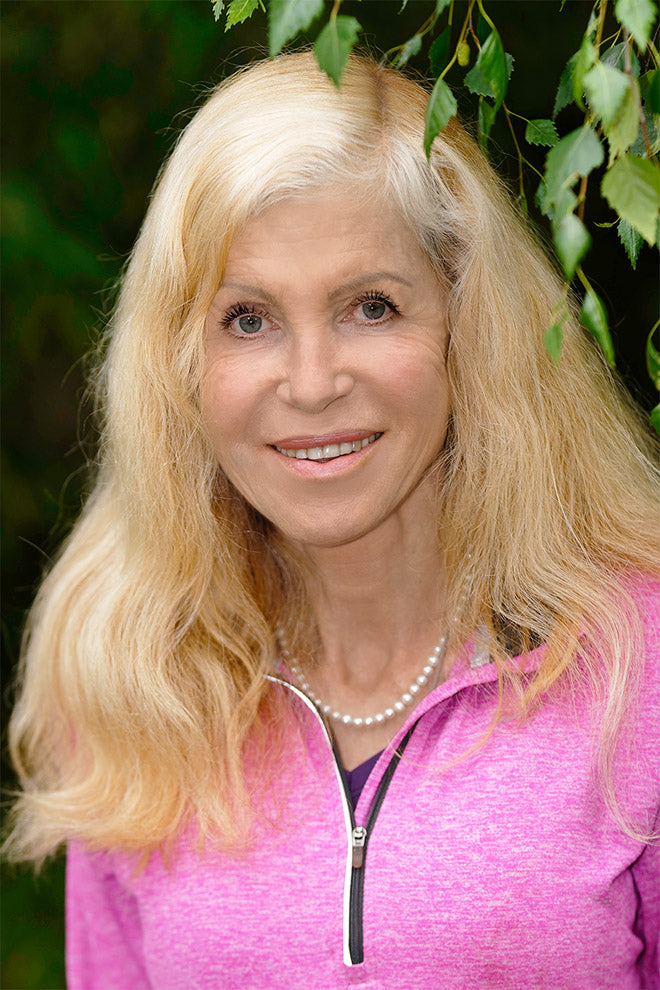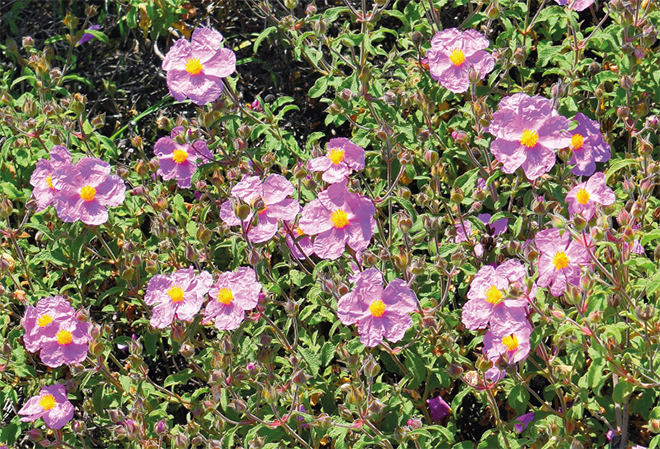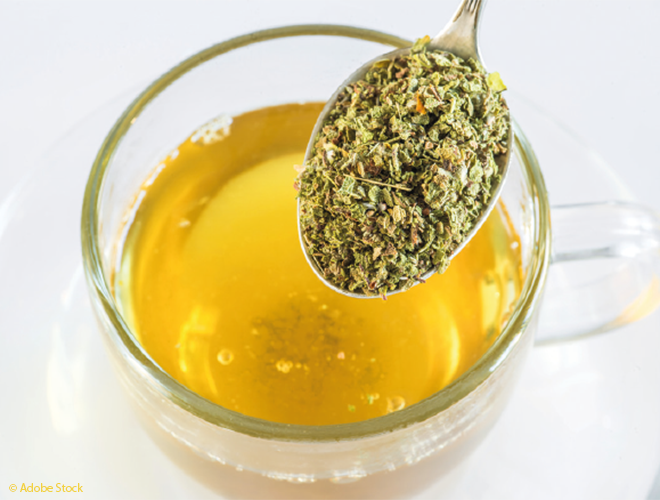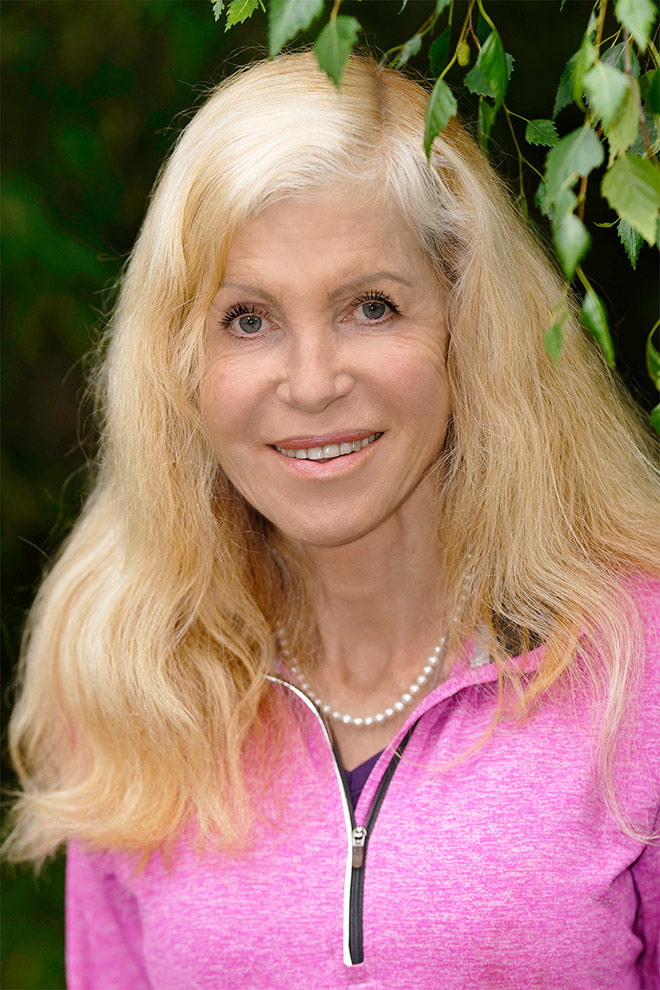
Interview with Barbara Simonsohn: “The nettle is the heart of nature and gives us a symphony of nutrients!”
Interview with Barbara Simonsohn: “The nettle is the heart of nature and gives us a symphony of nutrients!”
"The nettle is 'Medicinal Plant of the Year 2022', and rightly so - there is no other plant in our latitudes that is such an all-rounder and combines such a variety of therapeutic and prophylactic applications. With its help, we are much better able to cope with the diverse challenges of everyday life, both physically and mentally." Health expert Barbara Simonsohn , author of the compact guide " Nettle ", explains in an interview why we should not avoid the medicinal plant, which is often reviled as a weed, but instead make use of its numerous amazing properties and effects .
The stinging nettle has just been named “Medicinal Plant of the Year 2022”. How did this come about, and why is the plant praised by Rudolf Steiner as the “queen of weeds” mostly mistaken for a weed?
Barbara Simonsohn: In my opinion, the Theophrastus naturopathy association, consisting of naturopathy experts, has rightly chosen the stinging nettle or Urtica dioica as the "medicinal plant of the year". The nettle plant thus replaces horseradish as the medicinal plant of the year 2021. This choice is spot on, as there is no other plant in our latitudes that is such an all-rounder, combining such a variety of therapeutic and prophylactic applications. From bladder problems to rheumatism, from inflammation to prostate problems, from heart problems to lack of motivation. The stinging nettle can relieve pain, strengthen the immune system and stimulate the metabolism. Parts of the plant, in this case seeds and roots, also work as a remedy for hair loss and to increase potency. The stinging nettle is not only characterized by the variety of uses, but also by the fact that all parts of the plant have healing qualities: the entire herb, the flowers, the fruits or seeds and also the roots can be used therapeutically. The title of “Medicinal Plant of the Year” was also awarded because of its ecological importance. The nettle is the sole food or main source of food for the caterpillars of many butterfly species, including the peacock butterfly and the small brown butterfly. So if you want to do something for your health and love butterflies – who doesn’t? – you should leave nettles in your garden and not remove them radically. Because: without caterpillars, there are no butterflies!
Nettles are not "weeds" but medicinal herbs. They were an important ingredient in the nine-herb soup of the Celts, Slavs and Germanic tribes, who held the defensive herb in high esteem. The Germanic tribes considered the nettle so sacred that magic spells were recited when it was harvested. Some of these have been handed down and you can find them in my book. Rudolf Steiner gave it the title "queen of weeds" and used it for his biodynamic preparations. In his eyes, the plant was as important to the plant kingdom as the heart is to humans. For the Indians and Tibetans, the nettle is even a sacred plant; the slopes of Kailash, the holiest mountain in Asia, are covered in dense nettle forests. The mountain is considered the seat of the god Shiva and the highest chakra of the earthly body. Milarepa, the greatest poet in Tibet, ate only nettles until his enlightenment and gained psychic abilities, called Sidhis, through his nettle diet.
Hardly any other plant has such a density of vital substances as the nettle. What are its ingredients and what significance do they have for our health?
Barbara Simonsohn: The nettle is truly a cornucopia of vital substances and helps to compensate for deficiencies in our nutrient-poor diet. As a superlative plant, it contains 30 times as much chlorophyll as lettuce and more than any other native plant, 50 times as much iron as lettuce and twice as much as beef, 6 times as much vitamin C as lemons and spinach, 5 times as much protein as avocados, 40 percent more protein than soy, and it has more than 3 times the antioxidant potential of vitamin E, contains twice as much fiber and twice as much manganese as spinach, 7 times as much magnesium as lettuce, twice as many health-promoting long-chain omega-3 fatty acids as spinach and three times as many polysaccharides as spinach, and next to the well-known horsetail, the nettle has the highest content of soluble silica of all native plants.
Chlorophyll, the "basis of life" and jack of all trades, ensures healthy blood formation and a healthy heart, prevents iron deficiency, optimizes the oxygen supply to the brain, stimulates the metabolism, protects against radiation damage, has an antiviral and antibacterial effect, strengthens the immune system, promotes intestinal health, lowers high cholesterol levels and optimizes repair work in the body, such as in wound healing or burns. Nettle leaves contain 13 vitamins, including the entire complex of B vitamins, which are also called nerve vitamins. Nettle is also very rich in vitamin E, with 800 micrograms per 100 grams. This vitamin is not only the fertility vitamin, but also protects against cell and tissue aging. Phytosterols lower cholesterol levels and have an anti-cancer effect, and the high protein content is important for tissue development and the formation of the feel-good hormones serotonin and dopamine. The mineral density is enormous. The silica in the nettle makes connective tissue, hair, skin, bones and blood vessels healthy. The calcium mineralizes teeth and bones and increases resistance to infections. The nettle contains 70 times more calcium than Swiss cheese. Boron prevents arthritis, manganese energizes the brain. The magnesium keeps the bones healthy, strengthens the heart and, as an anti-stress mineral, prevents nervousness. The sulfur detoxifies the body and promotes blood circulation. The iron content is almost twice as high as in beef. Iron is important for blood formation, oxygen transport and for the heart. A deficiency, which is particularly common among younger women, can lead to ADHD, depression, irritability and a weakened immune system.
The body can use nettle protein very well and the amino acid profile is balanced and optimal for the human organism. The saponins clean the blood and activate the glandular system. The flavonoids protect our blood vessels, detoxify the liver, prevent allergies and protect against UV and X-ray radiation. Numerous polyphenols such as quercetin and caffeic acid hunt down free radicals and keep us healthy and young. If you are stung by a nettle, it has a mood-lifting effect because the stinging hairs contain ready-made serotonin, which is unique in the plant world. Nettle seeds in particular contain valuable fatty acids and highly concentrated vitamin E, substances that strengthen, rejuvenate and regenerate. It is no exaggeration to speak of a "symphony of nutrients".
The nettle has been known for thousands of years and was used for medicinal purposes in ancient Egypt, by the ancient Greeks and Romans. What are the most important areas of application and what is the current use of this medicinal plant?
Barbara Simonsohn: Since ancient times, nettles have been used as a remedy for wounds, ulcers, as an aphrodisiac, to increase fertility, as a tonic, against rheumatism and gout, for circulatory or digestive disorders, for anemia, allergies, eczema, hair loss, prostate problems, diabetes, urinary tract diseases and for all kinds of skin problems such as acne. All of these areas of application or indications have been confirmed in studies by modern medicine. In its mystical meaning, nettles keep evil spirits away and protect against storms. Among the Germanic tribes, they were dedicated to Donar, the god of thunder, and thus also stood for potency, fiery love and courage in battle. Because nettle seeds increase the fire of love and virility, the plant was frowned upon in medieval monasteries and nettle seeds were strictly banned. Even ancient doctors like Dioscorides, the Greek doctor in the service of the Roman emperors Claudius and Nero, had proclaimed that nettle seeds made people passionate in love and eased the pains of childbirth. It is no wonder that monasteries banned nettle seeds from beer recipes and now only contain hops and malt, in accordance with the German Purity Law - both plants have a calming effect. In my book you will find a recipe for brewing beer with nettle seeds, which is a balanced beer because it also energizes. In England, where many old Germanic customs have been preserved, they still brew a refreshing "nettle beer", which is particularly good for older people who suffer from gout or rheumatism.
You don't have to be a "herb witch" with magical abilities to benefit from the power of the nettle. Nevertheless, many collectors will be put off by its "burning" effect. What should you pay attention to when searching for and harvesting the plant, and what do you recommend for processing the leaves, roots and seeds?
Barbara Simonsohn: Anyone who collects nettles can arm themselves with gloves. The "professionals" collect nettles without gloves. They grip tightly, sift leaves and seeds into a large bag, and don't mind if they sting or itch somewhere. On the contrary, they get a dose of euphoric serotonin that is injected directly into the blood. The Romans rubbed themselves with nettle twigs when they conquered Britain, out of fear of rheumatism in the cool, damp climate of the island. In the Middle Ages, urtification, whipping with nettle twigs, was also common for rheumatism and arthritis. The best way to dry leaves and seeds is at raw food temperature in a drying device; the same applies to the cleaned and cut yellow roots. After drying, they can be stored in large preserving jars in the dark and used as tea. The tasty seeds can be added to salads and muesli as power food. If you grind the herb with seeds in an electric coffee grinder, you get a bright green powder that, when mixed with water, becomes an invigorating, blood-purifying and delicious food supplement. The local superfood nettle is a rejuvenating and health elixir. Leaves for tea or vegetable dishes should preferably be freshly harvested and processed; medicinal herb expert Maria Treben only recommends dried leaves in winter. Herbal liqueurs or bath additives can also be made from leaves, seeds and roots.
Nettles can be used not only internally but also externally, for example in the care of skin and hair. What effects do nettles have and how can natural cosmetics be made from them?
Barbara Simonsohn: Nettles have an anti-inflammatory and antioxidant effect. This means they successfully counteract skin problems in which inflammatory processes play a role - such as psoriasis or acne. The simplest care product is to juice fresh nettles and mix a teaspoon of the juice into your favorite cream. You can also use nettles to make a peeling or use them for a compress or face mask. Nettle-based healing ointments used to be standard household remedies and were used to treat itching, acne and psoriasis. A facial skin oil based on nettle leaves and olive oil soothes and smoothes the facial skin, suitable for all skin types. Bath additives made from strong nettle tea soothe and calm itchy and inflamed skin. Nettle-based tinctures are highly concentrated and easy to dose, and their healing ingredients are also available in winter. A particularly worthwhile area of application is hair problems of all kinds, including hormonal hair loss. Nettle has an astringent, anti-inflammatory and tonic effect. The phytoestrogens promote hair growth and make the hair shiny and healthy.
The importance of the nettle has long been known in biodynamic agriculture. What role does the nettle play there, and how can garden and animal lovers use it effectively?
Barbara Simonsohn: Rudolf Steiner developed a series of herbal preparations that are added to compost to make it receptive to the dynamic impulses that radiate from the planets to the earth. The nettle is buried in humus soil for a year and then added to the compost in homeopathic doses. It "radiates through the compost like iron through the blood," according to Rudolf Steiner. You can either learn to make the biodynamic preparations yourself, or you can simply enrich your compost with nettle leaves and stems. Please do not use any herb with seeds, otherwise you will have this vital plant everywhere in your garden. You can make nettle liquid manure as fertilizer, strengthen the immune system of plants with nettle tea, fight fungal infections and scare away pests, and use nettles as surface compost. Nettles stimulate the formation of humus and promise a rich harvest as well as good CO2 binding. Nettle also works wonders when added to animal feed. The fur of dogs and cats shines, chickens lay more and tastier eggs, horses become more spirited, and cows produce more and more valuable milk - this is known as the "milk magic".
Your guide lists numerous illnesses and complaints that nettles can help treat. What should you pay attention to when treating yourself?
Barbara Simonsohn: There are no restrictions on how to use it. Perhaps replace spinach with nettles in the kitchen. Sprinkle nettle seeds over your cereal. Make your own tea or green drinks, smoothies or juice from nettles. Wild herbs such as nettles already play a major role in many gourmet restaurants. To help you sleep better, you can make a herbal pillow out of nettle leaves, perhaps mixed with lavender. An alkaline bath can easily be made using strong nettle tea as a bath additive. If you have any complaints, of course you should first go to the doctor or alternative practitioner. If you have the choice, I would first resort to natural remedies with no side effects, such as nettles. I am also not aware of any overdose. They say that there is a herb for every illness. In the case of nettles, it should rather be said that the herb is grown for every illness, so broad is its spectrum of effects. With this medicinal plant, people have more life energy again and their cells are well nourished. Back to the roots and back to balance. With the nettle, we are better able to cope with the diverse challenges of everyday life, physically and mentally; it strengthens our resilience, our resistance. In my opinion, the renaissance of the nettle is long overdue. With the medicinal plant of the year 2022, we strengthen our willpower and our inner doctor.
Book tip:
Barbara Simonsohn: Nettle - the miracle herb for health, cooking and beauty. 101 uses and recipes. Compact guide . Mankau Verlag 2022, paperback, full color, 11.5 x 16.5 cm, 158 pages, 12.00 euros (D) / 12.40 euros (A), ISBN 978-3-86374-652-0
Link recommendations:
More information about the book “Nettle”
To the reading sample in PDF format
More about the author Barbara Simonsohn
Our social networks – for questions, criticism, suggestions











